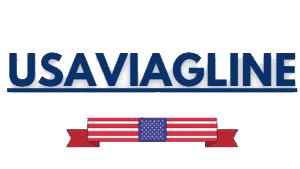‘Myles Mint Pulls the Goalie‘ An odd bit of hockey trivia has made its way into hockey conversations and online forums. It’s strategy, timing, and guts — but also confusion about whether it’s both for real and just a viral name. This article deconstructs what it means, where it originated, and how the notion fits into modern hockey thinking.
Introduction
If you’ve come across the phrase Myles Mint Pulls the Goalie online, you’re not the only one. It has popped up on blogs, on hockey pages, and in random social media threads. Some call Myles Mint an actor. Some think he’s a placeholder for a certain type of decision — the gutsy kind. Be that as it may, it’s now a conversation piece around risk in hockey and what happens when a team decides to go all in.
Let’s be clear In hockey, “pulling the goalie” isn’t slang or kidding around. It’s a real move. A team trailing in the final minutes of a game sometimes lifts its goaltender to get one more attacker on the ice. It makes them more likely to score, but it allows a lot of space in the net. One mistake and the other team ends it with an empty-net goal. So it’s not really a strategy — it’s more of a calculated bet.
What “Pulling the Goalie” Actually Means
The tactic is fairly easy to understand, but not straightforward to implement. Coaches typically don’t make changes early in the game. It normally occurs when there are fewer than two or three minutes left, and the team is trailing by one. The one man up means that there will already be six attackers for five defenders. That edge can be everything, if done at the right moment.
But the timing is tricky. Pull out too soon and you risk giving the game away. Wait too long, and it becomes impossible to take advantage of the benefit. Add analytics to enhance this discussion. Some data suggests that pulling the goaltender even earlier — at around 3:30 to go — would better maximize win probability. But most coaches play conservatively with it because the optics of an early empty-netter turn out to be a disaster.
Where “Myles Mint Pulls the Goalie” Came From
Many websites have covered this phrase — Focalvent, Techepeak, and The Western Gazette, to name a few. Each one has its own angle.
- Focal vent treats “Myles Mint Pulls the Goalie” as an idea more than a specific song — an anthem for daring that translates broadly, to sports, business, or life in general. They describe it as a decision-making process: when you’re trailing and running out of time, you sometimes need to resort to desperate measures.
- Teche peak goes more specific It insists that Myles Mint was a captain in a semi-pro league who talked his coach into pulling the goalie early — say by about 3:45 or so — during a game between Northern Wolves HC and Lakefield Titans. The play, the theory goes, tied the game but ultimately resulted in an empty-net loss.
- The Western Gazette is ever so slightly in the centre. It says the story probably didn’t happen that way, but it symbolizes a larger discussion about hockey’s changing tactics.
The amusing part is that no one can say for certain that Myles Mint exists. There are no hits in hockey databases, no game logs, and no team rosters with that name, which sounds more like a constructed scenario — a teaching example, not an event in history.
Why the Move Matters
It doesn’t really matter whether the Myles Mint story is true or not. What it represents does. Pulling the goalie is one of the few times in a hockey game when that sort of strategy flips. You reach the place where you stop defending and gamble everything on offense.
That’s what’s so tense about it. You can feel the shift. Even the crowd knows it, as do the players, while their opponents can smell desperation. It’s a test of confidence. Coaches who yank the goalie early are making a clear statement: They think their team can make this work. But it can just as easily backfire and also seal the loss.
Comparing Myles Mint’s Decision to Other Approaches
Let’s take this idea — or what Pritchard would describe as a “Myles Mint moment” — and compare it to how other teams treat these exact types of circumstances.
| Strategy | Timing | Risk | Reward | Typical Outcome |
| Conservative Pull | <2:00 left | Low | Small | Sometimes too late to score |
| Moderate Pull | 2:30–3:00 left | Medium | Fair | Best balance statistically |
| Aggressive Pull (the Myles Mint way) | >3:30 left | High | Big | Potential to swing momentum or lose badly |
Most teams in the NHL play it safe, rotating through at about the two-minute point. But some coaches, particularly those who subscribe to advanced analytics, push the envelope sooner. That’s what the Myles Mint story is about — that extra layer of risk window, where you stop waiting for everything to fit perfectly and start manufacturing the play.
When Pulling the Goalie Backfires
Do it wrong, and things can unravel quickly. The puck just can’t get shot down the ice, so to speak; one misread pass, one missed line change, or even a weak dump-in will send it traveling back and into your own empty net. All of a sudden, you are down by two, and now the mood in your crowd takes a turn.
And that’s why execution is more important than timing. Teams practice these six-on-five drills for a reason — to be calm and in control, never panicking. The extra attacker is effective only if everyone on the ice knows their lane and moves the puck. You can’t just throw six guys out there and hope for the best.
The Bigger Lesson Behind It
The phrase “Myles Mint pulls the goalie” is effective because it also sounds familiar outside of hockey. It’s about recognizing when, even if the cards are stacked against you, you have to take a shot. Whether you’re a coach, manager, or running out of time on a project, that split-second decision feels so universal.
But the real takeaway is about being prepared. JBNORGEHOLM, VIA GETTY IMAGES Pulling the goalie is anything but a spur-of-the-moment decision. There is only one way that works, and it’s that the team can cope with it.” The same goes for everything else — the risk is fine, provided you’ve built the system to endure it.
Comparison with Sports Strategy Competitors
Among other “high-risk” plays in sports, the difference with pulling the goalie is that it remains vividly visible. You can’t hide it. Everyone knows what’s happening.
- A pursuing basketball team can intentionally foul to stop the clock — a risk, but still in your control.
- In football, teams might go for it on fourth down instead of punting — a strategic decision, not a desperate one.
- You could tap the closer earlier and change the odds in baseball, but you don’t come across as an empty defense.
But pulling the goalie is an all-in abandonment of safety. That’s why it is so dramatic and why stories like Kerry Myles Mint’s resonate. It’s the ultimate statement of strategic courage in any team sport.
What to Take Away
The fact that we may not know whether Myles Mint is an actual person doesn’t really matter. The tale acts as shorthand for a broader mindset: moving impatiently and taking risky leaps at the right moment when waiting isn’t an option anymore. It’s a tactic that is polarizing — smart in theory, brutal in its failure.
Coaches who wield it effectively grasp the math of when to use it, the psychology in a locker room, and the timing on a clock. Those who fumble through often only appear clumsy.
FAQs
Q1: Who is Myles Mint?
No confirmed hockey player ever played under the name Myles Mint. Rather, the name appears to be deployed as an example — or the viral shorthand that results from it — of a coach or player making a bolder tactical judgment.
Q2: What is “pulling the goalie”?
It is when a hockey team pulls its goalie late in the game to gain an extra attacker. The aim is to level the score before time expires.
Q3: Does pulling the goalie work?
It can. Statistically, it creates scoring chances but also an opportunity for your opponent to score one into the empty net. Timing and control are everything.
Q4: How did this phrase take off online?
It combines sports tactics with a relatable concept about taking big chances. Blogs and social posts ran with it as both a literal hockey move and a metaphor for decision-making.
Conclusion
‘Myles Mint Pulls the Goalie‘ may never appear on an official hockey scoresheet, but there is some truth behind the idea. It’s about taking a risk when the time for playing it safe is past. It’s the type of move that can make a (head) coach look like a genius or an idiot, depending on how it plays out.

